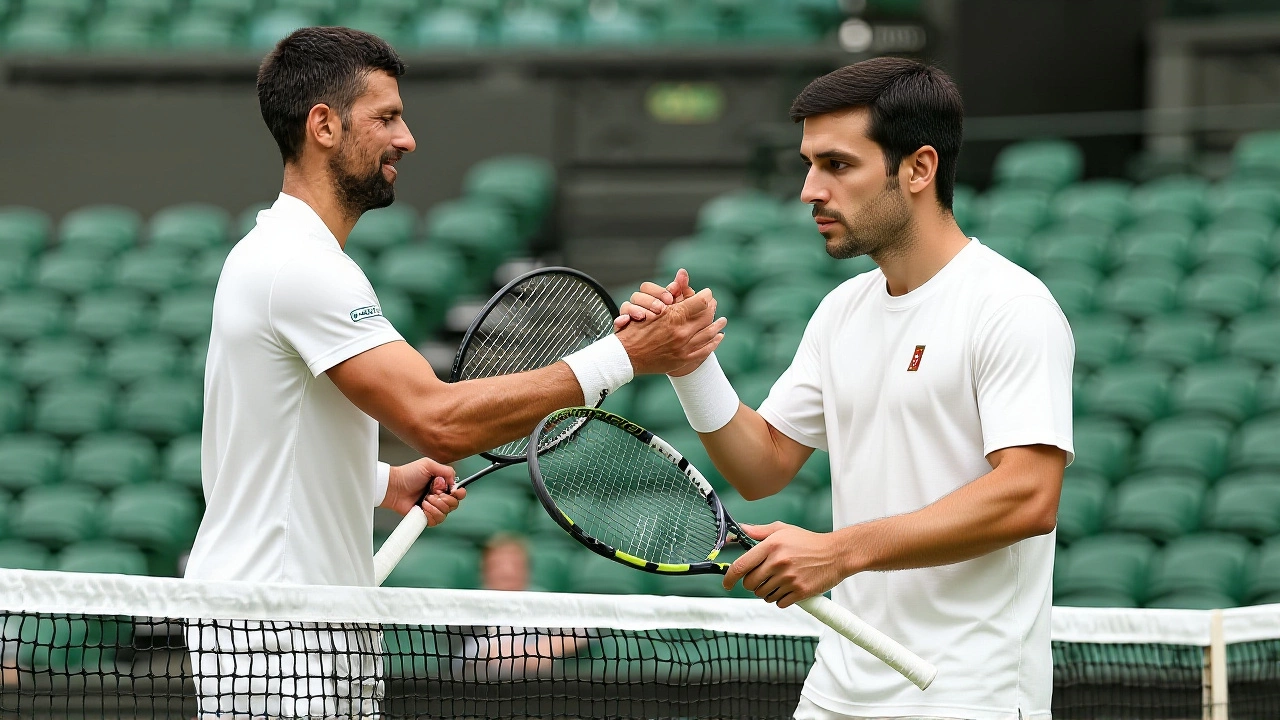Djokovic – All You Need to Know About the Serbian Tennis Legend
When talking about Novak Djokovic, the Serbian champion famous for his record‑breaking Grand Slam tally and relentless baseline game. Also known as Djoker, he has reshaped modern tennis with his stamina, flexibility, and mental grit. Djokovic isn’t just a name on the scoreboard; he’s a benchmark for consistency. Since breaking onto the ATP Tour in 2006, he has piled up over 90 titles, topped the rankings for more than 380 weeks, and become the first player to complete a double Career Grand Slam. Those numbers matter because they set the standard for every upcoming pro. In this intro we’ll unpack the why and how behind his dominance, so you can instantly grasp why his matches generate so much buzz.
Why Djokovic matters in modern tennis
To understand his impact, look at the core sport itself. Tennis, a global racquet sport played on various surfaces has evolved from serve‑and‑volley to baseline power play, and Djokovic sits at the heart of that shift. He capitalized on the slower conditions of today’s hard courts, turning defensive skills into offensive weapons. Then there’s the Grand Slam, the four biggest annual tournaments that define a player’s legacy. Djokovic’s 24 titles span all four events, proving he can adapt his game to grass, clay, and hard courts alike. Finally, the ATP ranking, the weekly points system that decides world order rewards his consistency; he’s held the No. 1 spot longer than any rival in the Open Era. These three pillars—tennis, Grand Slams, ATP ranking—are tightly linked to Djokovic’s narrative and explain why analysts constantly reference him when discussing the sport’s evolution.
Beyond raw stats, Djokovic’s style hinges on three key attributes: extreme flexibility, a near‑perfect return, and a psychological edge. His flexibility lets him reach balls most players would deem impossible, turning defensive shots into winning opportunities. The return game is a separate beast; he neutralizes even the hardest serves, often breaking opponents’ best chances. Mentally, he thrives under pressure—his 2023 Wimbledon comeback after a two‑set deficit is a textbook case of resilience. Together, these traits create a feedback loop: better fitness fuels deeper focus, which in turn improves match outcomes, which then boosts ranking points, perpetuating his dominance. That loop illustrates the semantic triple “Djokovic requires extreme fitness, which enables superior mental toughness, which influences match outcomes.” Readers can see the cause‑effect chain every time they watch a Djokovic rally.
What you’ll find in the collection below is a curated set of articles that digs into those exact themes. From deep‑dive analyses of his most iconic Grand Slam finals to breakdowns of his training regimen and the science behind his return, each piece adds a layer to the bigger picture. Whether you’re a casual fan curious about why his matches feel different, a coach looking for tactical inspiration, or a data geek hunting for ranking trends, the posts offer practical insights and fresh angles. Keep scrolling to discover match statistics, expert commentary, and behind‑the‑scenes stories that showcase why Novak Djokovic remains a central figure in today’s tennis conversation.

Alcaraz Beats Djokovic in US Open Semis, Secures Spot in Final
Carlos Alcaraz dispatches Novak Djokovic in straight sets at the US Open semifinals, securing his spot in the final and edging closer to world No. 1.